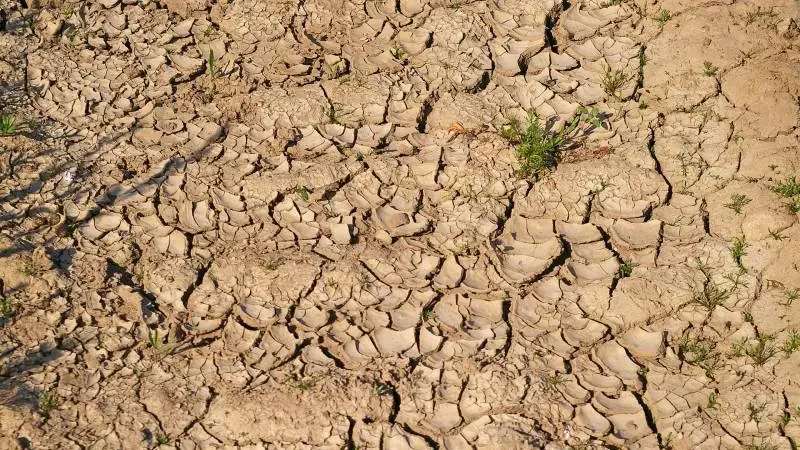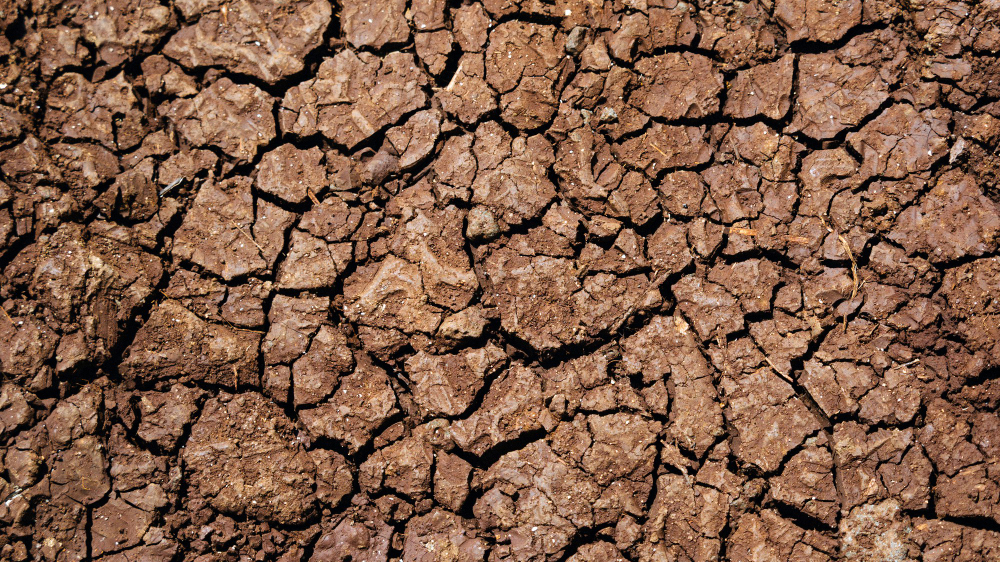What To Add To Clay Soil? – Comprehensive Guide

When it rains, walking or working on clay soil is often a daunting task; hence you want to know what to add to clay soil for gardening.
Apart from the fact that it sticks to your tools, it also makes everything look messy. Unfortunately for most of us, heavy clay soil is all we’ve got, so we have to get the best out of it. One great thing about clay soil is its holding/retaining capacity; it is better than other soil types. Its holding capacity can help you retain and hold nutrients required for your plants’ optimum growth.
Never allow your clay soil to stop you from having your desired garden.
Read on to see how you can improve your clay soil’s performance.
Pros and Cons of Using Clay Soil
Clay soil is incredibly dense and holds moisture and essential nutrients, making it a great choice for certain plants. However, it can be challenging to work with, as it is slow to drain and takes longer to warm up in the spring.
At the same time, compaction can make it difficult for plant roots to take root deep in the amend clay soil. Additionally, its alkaline pH can create an inhospitable environment for certain plants.
If you are willing to put in the time and effort, clay soils can be very rewarding, as it has the potential to provide an ideal home for a wide range of plants.
What To Add To Your Clay Soil For Gardening Purposes
Most gardeners are stuck with clay, but that shouldn’t make you bid gardening goodbye; neither should it deprive your gardening plants of the required nutrient. Garden soil contains many components, ranging from organic matter, micro-organisms, and nutrients to mineral particles.
The best and ideal soil for gardening is loamy soil because it contains a high amount of organic matter, moderate mineral substances, and a mixture of sand and clay.
What Is Clay Soil?
It is a kind of soil with little organic matter and fine mineral substances. Its small pore size makes it sticky and poorly drained. This soil is the most familiar soil in many parts of the US.
Most garden plants and vegetables do not grow well in clay soil; however, some shrubs do well. With clay soil, it is often tricky for plants’ roots to penetrate the ground to access the soil’s nutrients. The good news is that it is possible to grow various plants in it with the proper knowledge and strategy.
How Do You Know It’s Clay?
If it is always waterlogged even after it has stopped raining for a while, it is likely clay soil. And for some, their soil appears to crack on dry or sunny days; this indicates that the soil is clay. When you notice that weeds like coltsfoot, chicory, and dandelion are continually growing in your garden, it is likely to be clay soil.
To further confirm what type of soil you have. You can conduct a simple test by following these steps:
- First, scoop some amount of soil a day after it has rained.
- Next, close your palm against the soil.
- Check if the soil is still clumped together or set apart.
- If it sticks together, then it is clay soil.
Making it suitable for gardening often takes time, but it is worth the wait. Here are some things to add or do to your ground to improve it.
Add An Organic Substance
Adding organic material will massively help your clay soil get better at planting. At the same time, you can add various organic materials. Compost is one of the best organic substances that can be used to enhance your soil. Compost helps improve its texture and structure.
Due to the clay soil’s small pore size, it is usually hard for the plant to get aerated. In this case, the compost loosens the pores and allows sufficient air to get to the plant. The compost also elevates the soil’s pH, thereby increasing the population of valuable micro-organisms beneficial to the plant.
To add the organic material, dig the soil to a depth of 10-14cm, then add 3 to 5 inches of compost.
Plant A Cover Crop
Growing a cover crop can also help you improve the efficiency of your soil. It is best to do this during the rainy or cold season. When you grow a cover crop close to or on clay soil, its root goes into the clay, depositing nutrients into the ground. You could later remove the cover crop and bury it in the soil.
Some typical crops you grow include clover, borage, and hairy vetch.
Add Gypsum
Add the gypsum to the surface; you can use a lawn spreader. Clay soil is highly compacted; adding gypsum could reduce this compaction, consequently improving its structure. Gypsum also improves the soil without altering its pH.
It supplies the soil with calcium.
The calcium provided reduces the chances of blossom end rot disease from happening.

Earth Science Fast Acting Gypsum
25 pounds, Covers 5,000 square feet, Promotes healthy lawn growth, 25 lb. package size
Visit at AmazonTo add gypsum:
- Configure your lawn spreader to 40 pounds per 1000sq feet.
- Suppose the soil in which you want to spread the gypsum has no plants. Set the lawn spread to 20 -30 pounds per 1000sq feet.
- Add the granulated gypsum to the lawn spreader until it reaches the line.
- Spray the gypsum evenly on the soil; you can spray it on the plants as it has no harmful effects.
What Improve Clay Soil Drainage System?
Clay soil is known to have the smallest pore size, causing it to retain a lot of water. It finds it very hard to release or filter water, resulting in poor drainage or waterlogging. If clay soil is not well-drained, it could reduce or cut short the access of the plant’s root to oxygen; this can result in the death of the plant.
Aside from this, poorly drained soil can result in a breeding ground for fungus to thrive, causing more damage to the plant. It would help to ascertain how bad your clay drainage system is. Gray-colored has a flawed drainage system, but red has a better one.
You can improve its drainage through the following:
Practice Raised-bed Kind of Gardening
This is a cultural approach to solving the drainage problem. You can construct the bed by arranging a brick or plank to a certain height of 3-4 ft width. Ensure that the bed built is not too wide to access the middle. You should fill the bed that has been well mixed with compost.
See Also: 5 Best Vegetables To Grow In A Small Raised Bed
Include Organic Matters
You can spray the surface with wood chips, bark chips, or sawdust. These substances will easily leach into the ground. Organic matters improve the soil by modifying its structure, thereby improving drainage.
Plant Cover Crops
Cover crops help solve this drainage issue by increasing decaying plant/organic material. Some cover crops you can plant include borage and Phleum pretense (also known as timothy hay). These crops thrive well in zones 4 by 8.
Use a Storm Drain
This device is used to collect water that could have been logged in clay soil. It can also remove water from a low spot to a more extensive water collection system. This device is suitable for gardens.
You can also consider using a channel drain to drain water off the water-logged clay.

What To Add To Grow a Vegetable in Your Garden
Growing anything on clay soil can be challenging. The reason for this has been discussed above. Vegetables like lettuce, broccoli, and the like grow well on clay soil. Raising vegetables in your garden on clay soil is possible, but you must follow these steps.
Till and Mix the Soil With Compost
Tilling breaks the uppermost layer and some other rocky parts of the soil. After tilling the soil, mix the clay soil with compost to a depth of 6-9 inches; this practice increases the soil’s absorptivity. You could add some mulch of wood to your clay soil, but ensure that the wood has not been sprayed with chemicals.
Plant and Water the Vegetable
Hugelkultur is a better form of a raised bed; woods are mixed with the soil and compost. After the bed has been made, ensure you water the plant appropriately.
What To Add to Clay Soil To Grow a Grass/Lawn
Growing varieties of grass such as buffalo grass and tall fescue on clay soil are not as complicated as you think. Before adding compost, you must add lime to the earth. The lime helps to increase the pH of the soil to about 6.
Having low or poor pH prevents nutrients from being available to the plant. The grass seed should be sprayed both vertically and perpendicularly on the soil. You can use a broadcast spread to distribute the seed evenly.
Dig various holes at a distance of about 6 inches from each other. Add water to these holes to moisten the soil, after which you can put each plug into the hole. Ensure that the plugs are at the same level as the ground.
Use a sprinkler to add water to each of those plugs; you can do this two to three times a day. Be sure that the soil is not too soaked with water.
Never forget to add mulch and spray the soil with water every time.
Can I Add Sand to Clay Soil?
Adding sand to clay soil may seem like a good idea, but it can make the soil worse and resemble concrete. Sand can cause clay soil to become even more compact, making it more difficult for air and water to penetrate the soil. Furthermore, sand does not provide the necessary nutrients plants need to grow, so the benefits of adding sand are minimal.
The best way to improve clay soil is to add organic material such as compost.
What To Add When Preparing To Grow Flowers
Planting a flower is similar to what we discussed above.
For flowering purposes:
- Till the soil.
- Add compost.
- Mix the soil and compost.
- After this, you can plant your flower and water it properly.
As said earlier, getting the best out of your garden’s clay soil depends on your knowledge and how you use it.